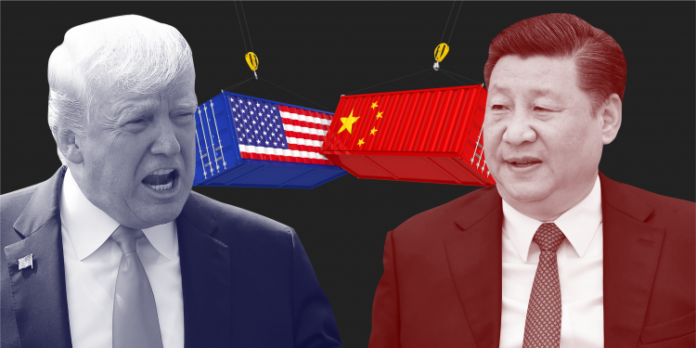Trade War With China: The Trump administration seems confident that consumers will not feel pain from its escalating trade war with China.
“Because it’s spread over thousands and thousands of products, nobody’s going to actually notice it at the end of the day,” Commerce Secretary Wilbur Ross told CNBC on Tuesday, when asked about the administration’s latest round of tariffs on Chinese imports.
But a pain-free trade war with China is nearly impossible. For American consumers, prices have already risen on some products that the administration targeted for tariffs this year — most notably, washing machines, which were subjected to steep tariffs in January.
It is true, as Mr. Ross noted earlier in his CNBC interview, that the administration has thus far devised such tariffs to minimize sticker shock on retail store shelves for American customers. The list of imports set to be “tariffed,” as President Trump proclaimed on Monday, still does not include T-shirts, smartphones or many other popular products that American stores import from China. The $200 billion list unveiled on Monday will start with a tax of 10 percent and rise to 25 percent in the New Year, a move that should mute the effect of this round of tariffs on holiday shoppers.
Next year, though, those products will almost certainly grow noticeably more expensive. China has already vowed to retaliate, raising the possibility that Mr. Trump will announce, as soon as this week, that he plans to impose tariffs on another $267 billion in Chinese imports — basically, everything Americans buy from their largest trading partner.
“China has been taking advantage of the United States for a long time, and that’s not happening anymore,” Mr. Trump said at a news conference on Tuesday. “We can’t let that happen.”
Tariffs are ultimately a tax on businesses and consumers, and with each new round, the administration is bringing them closer to home for the typical American.
Tariffs on thousands of products are “death by a thousand cuts,” said David French, the senior vice president for government relations for the National Retail Federation, which opposes the administration’s approach. “In the aggregate, household budgets will feel the impact.”

How we got here
China’s trade practices have long been a source of frustration for American companies, which are not able to gain access to parts of China’s market and are forced to hand over valuable technology and trade secrets to Chinese partners in exchange for operating there.
In June, the Trump administration said talks to change China’s trade behavior — which had spanned decades — were going nowhere and announced duties on $50 billion worth of Chinese imports.
The first round was intended to minimize pain on American consumers: Chinese aircraft engine parts, bulldozers, ball bearings, motorcycles and industrial and agricultural machinery were among the products targeted initially.
China hit back with tariffs of its own on $50 billion of American products and focused on the agriculture sector — punishing industries whose workers largely supported Mr. Trump.
Things have gone downhill from there. Mr. Trump said he would impose tariffs on $200 billion worth of Chinese products including consumer items, such as food, tools, housewares and some, but not all, electronics imports.

A new front in the war on Christmas
The initial effect of the new $200 billion round of tariffs will be felt just ahead of the holiday shopping season in the United States, when Americans will be looking to stock up on gifts. Higher prices for imported materials such as cotton, nylon, polyester and yarn means that clothing companies will have to pass additional costs onto consumers.
Then there are accessories. The tariffs will apply to imported purses, golf bags, ski gloves and mittens.
Retailers are not sure how fast the price increases will make their way to store shelves but they are bracing for the worst. Mr. French, of the retail federation, said many buyers are more likely to see big price effects next year than during the holidays.
Food could be an exception and consumers could start to see higher prices in the grocery aisles. A wide variety of fish, including sea bass and sturgeon, as well as nuts, fruit, vegetables, rice and cereal did not escape the Trump administration’s tariffs.

The next wave will be worse
Mr. Trump isn’t done punishing China and has threatened to tax another $267 billion worth of goods if China retaliates against the United States — which would mean America taxes nearly everything that enters from China. On Tuesday, China said it would impose tariffs of its own on an additional $60 billion in American goods.
Businesses are bracing for an unending trade fight. They’re not exactly sure how it will affect prices but they do not believe it will be helpful. “In some cases you’re not going to see those costs absorbed and they’re going to get passed on. In some cases, we’re going to absorb it where we can,” the chief executive of Macy’s, Jeff Gennette, told CNBC this week. “We’re going to see how the customer votes on this.”
Walmart’s chief financial officer, Brett Biggs, said last month that “While we know questions persist about tariffs, the potential future impact is difficult to quantify.”
“We are closely monitoring the tariff discussions and are actively working on mitigation strategies, particularly in light of potentially escalating duties,” he added.
The tariff list includes popular consumer items that line the aisles of department and big box stores, including bicycles, baseball gloves, sleeping bags and rain jackets.








